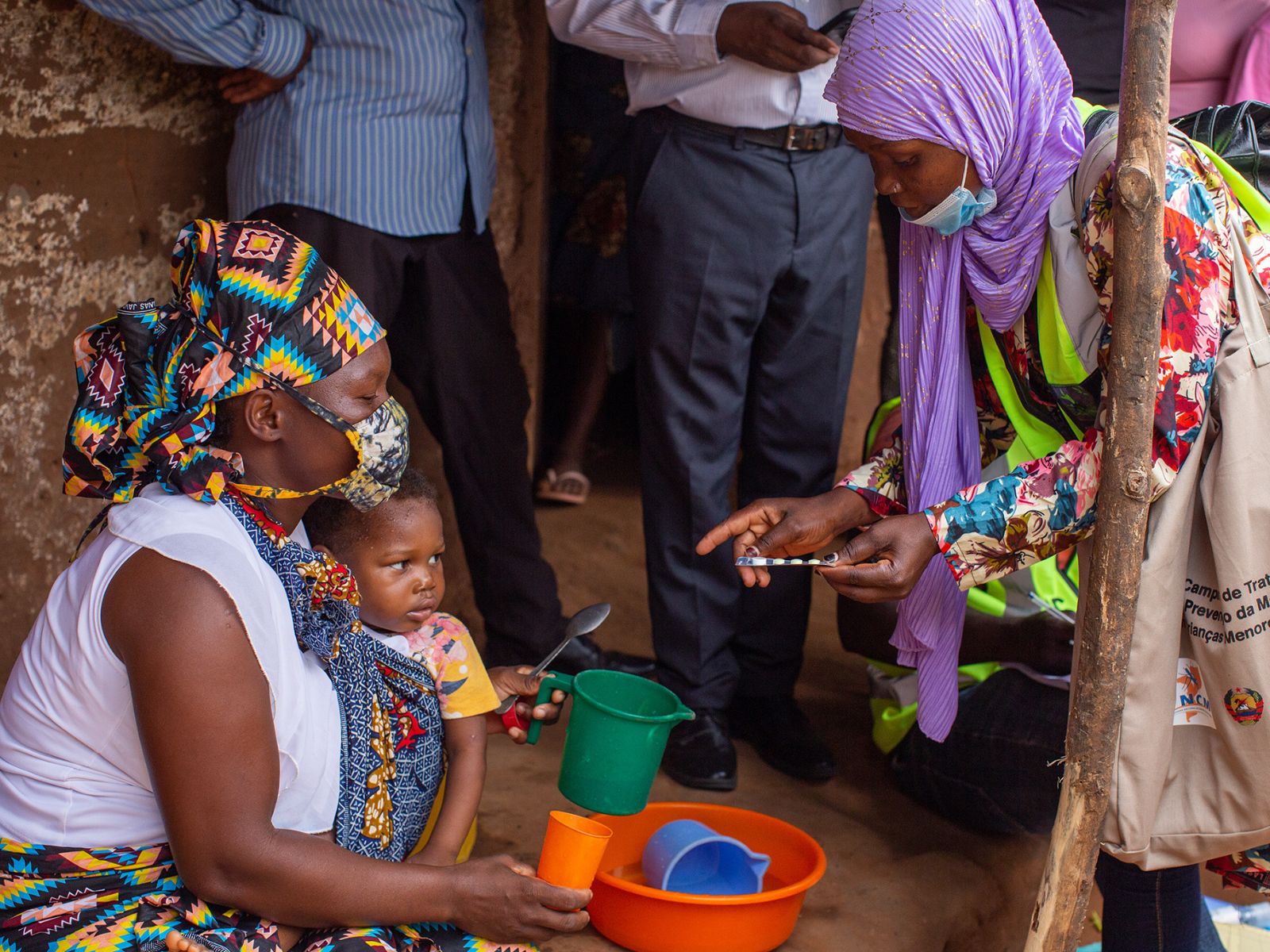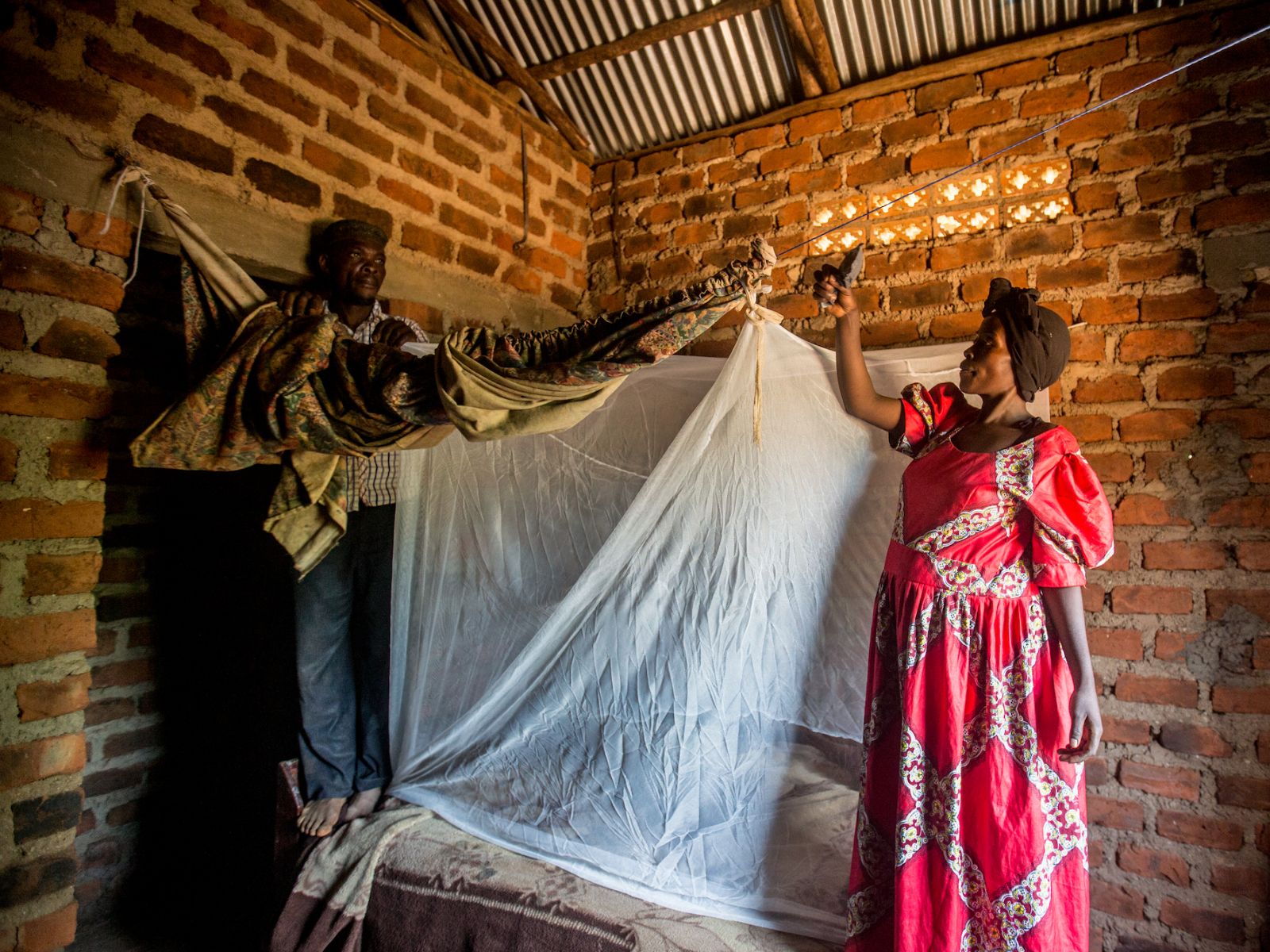World Malaria Day 2023: Making zero malaria a reality within a generation
This is a guest post from Malaria Consortium, an international non-profit organisation specialising in the comprehensive control of malaria and other communicable diseases – particularly those affecting children under five.

Despite significant global progress in controlling and eliminating malaria, this mosquito-borne disease threatens the lives of 3.2 billion people and is responsible for the deaths of over 600,000 people every year. In sub-Saharan Africa, its impact is compounded by high poverty rates and limited access to health services and continues to be a serious public health threat.
Malaria is largely preventable and treatable but progress in driving down the number of cases and deaths has stalled over the last five years and was further exacerbated by the COVID-19 pandemic. As global actors come together to mark World Malaria Day 2023 – the tag line for which is, ‘Time to deliver zero malaria’ – we ask, what needs to be done if we are to eliminate malaria within a generation?
Implement
Much of the progress made this century against the impact of this disease is because of the wide scale deployment of proven malaria control tools, such as insecticide-treated nets (ITNs), preventative drugs, such as seasonal malaria chemoprevention (SMC) and improved diagnostics and awareness. Effective implementation of existing malaria interventions is crucial to ensuring continued gains are made.
Last year, SMC – the administration of monthly cycles of antimalarials to children aged 3-59 months during the peak transmission season – was given to over 40 million children to help prevent them falling ill. Malaria Consortium’s SMC programme was responsible for ensuring around half of those 40 million children were protected.
In an effort to explore the further potential of SMC, we have been undertaking ground-breaking implementation research on SMC in Mozambique and Uganda, to build the evidence base for its use in new geographies and save more lives. Following initial results, earlier this year, Mozambique became the first country outside of the Sahel region to scale up its use of SMC.

Since 2005, over two billion ITNs have been distributed worldwide to prevent malaria. Treated with an insecticide called pyrethroid, use of these nets has been one of the most effective means of reducing malaria case numbers and estimates suggest have helped to reduce the number of potential deaths in children by around 20%.
The Malaria Action Program for Districts (MAPD) project in Uganda is just one of many examples of projects that helped to facilitate ITN distribution to every household in a bid to reduce malaria-related childhood and maternal morbidity and mortality. Women during their pregnancy, like Madina (pictured), received mosquito nets as a preventative method against potential malaria attacks.

Alongside the implementation of malaria interventions like these, working alongside communities to support them to engage with and take leadership in their delivery is essential to ensuring their sustainability and effectiveness. This is especially important in rural locations where communities are far from health services.
In Cambodia, we are training local volunteers like Norng (pictured) to provide free, point-of-care malaria testing and treatment services to mobile and migrant populations living along the country’s borders with Thailand, Laos and Vietnam.

Innovate
Despite the significant scale of implementation of proven malaria interventions, since 2015, the downward trend of malaria case numbers has plateaued and in 2021, there were an estimated 247 million malaria cases, an increase of 2 million from the previous year.
The ability of the Anopheles mosquito – and the malaria parasite it hosts – to constantly evolve has given rise to emerging drug and insecticide resistance, reducing the efficacy of existing tools including insecticides, antimalarial treatments and rapid diagnostic tests.
High quality research is essential to identify emerging biological threats and develop innovative, new solutions to overcome them. As part of a three-year research project in Ondo and Anambra states in Nigeria, Malaria Consortium is assessing the impact of mass ITN campaigns to reduce malaria incidence when deployed alongside other proven malaria control interventions.
The study seeks to improve vector control decisions and better understand the cost-effectiveness of ITNs containing both pyrethroids and the efficacy-enhancing synergist piperonyl butoxide (PBO) that was recently recommended by the World Health Organization (WHO) in response to the malaria mosquitoes developing genetic modifications, enabling them to become resistant to the toxic effects of pyrethroids.
Thanks to investment in research, the world’s first and long-awaited malaria vaccine was approved by the WHO. Less than a year after this approval, impressive trial results for another vaccine, the R21/Matrix-M, were published in The Lancet showing up to 80% protection in children aged five to 17 months. Vaccines, alongside new insecticide formulations, gene drive technologies and other biological tools in development could help spell the end for a disease that kills more than half a million children every year.
However, the WHO’s World Malaria Report 2021 estimated that around US$ 8.5 billion will be needed for research and development between 2021 and 2030. Exactly which innovative tools should and can be prioritised within the limited resource envelope that is actually available is an important question that must be answered.
Invest
Countries and partners are working tirelessly to hold the line against malaria – especially governments in high burden countries -implementing innovative approaches to tailor and deliver
lifesaving tools to the most vulnerable and hard to reach populations. However, funding gaps are contributing to declining progress. In the 20 years since its formation, the Global Fund to Fight AIDS, Tuberculosis and Malaria (Global Fund) has raised over US$55.4 billion and estimates saving over 44 million lives. It has been one of the most consistent mechanisms for global partnership and sustained investment in tackling malaria, responsible for 63% of all international financing for malaria programmes.
While many countries came together to increase their commitments at last year’s Global Fund Replenishment, the Fund fell short of its US$18 billion target to invest in saving 20 million lives in the next three years, securing US$14.3 billion at its 7th replenishment for the 2023-25 period. This has contributed to what is estimated to be an unprecedented shortfall of more than 50% in global malaria funding, holding countries back from maintaining life-saving malaria programmes at current levels and reaching everyone living at risk from malaria.
These investments in malaria programmes are critical to build more resilient health systems and help universal health coverage becomes a reality Strengthening health systems, training health workers, and improving supply chain management are necessary for delivering quality malaria services.
Monitoring and evaluating interventions is also essential to track progress towards malaria elimination and identify gaps in implementation. Given the emerging threats to current malaria tools, continued investment in research and development will be imperative to ensure the innovations necessary to overcome these threats.
With financial pressures of recent inflation in global markets and communities at risk of malaria still facing low coverage of lifesaving tools, national malaria control and elimination programmes must be invested in and scaled, to ensure progress isn’t rapidly reversed.
Through global collaboration between the public, private and philanthropic sectors, alongside implementation research – and with endemic countries at the forefront of decision-making – elimination in a generation is possible.
